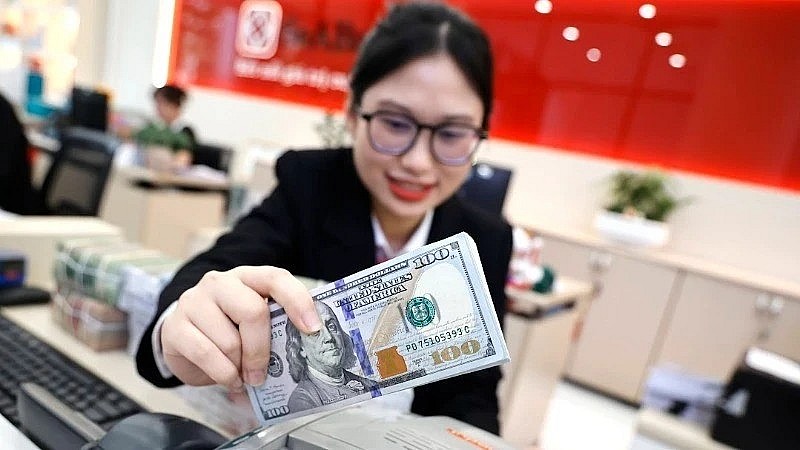Managing exchange rates is a delicate balancing act for policymakers, especially when faced with the multifaceted challenge of controlling inflation, boosting exports, stabilizing financial markets, and safeguarding foreign exchange reserves. The current global context only serves to amplify these complexities.
In the face of mounting external pressures, the SBV has demonstrated its agility in exchange rate management over the past few months. They have skillfully employed monetary policy instruments and intervened in the foreign exchange market when needed to maintain the robustness of the Vietnamese dong (VND). This proactive approach has proven effective in curbing inflationary pressures, preserving macroeconomic stability, and fostering export growth.
 |
| UOB Predicts Exchange Rate Fluctuations of 2%-3% in 2025 |
The SBV has been proactive in adjusting interest rates and promoting credit expansion to achieve a trifecta of objectives: controlling inflation, bolstering economic growth, and stabilizing the exchange rate. Notably, foreign exchange reserves have been pivotal in enabling interventions to stabilize the exchange rate and ensure sufficient liquidity. As a recent example, the SBV sold US dollars to maintain exchange rate stability in response to market fluctuations triggered by the US Federal Reserve’s interest rate cuts at the end of 2024.
Exchange rate stability is of paramount importance for safeguarding Vietnam’s economy and providing a supportive environment for businesses, particularly foreign direct investment (FDI) enterprises. However, experts caution that this stability can sometimes be at odds with economic growth goals. To stimulate the economy, the government and SBV often embrace expansionary monetary policies, such as lowering interest rates or increasing the credit supply. While these measures stimulate economic activity, they can also fuel inflation and lead to VND depreciation, creating exchange rate pressures.
SBV Governor Nguyen Thi Hong underscored the potential consequences of excessive interest rate reductions, which could result in exchange rate volatility and dampen investor confidence, especially among foreign investors. On the other hand, a tight monetary policy—characterized by higher interest rates or restricted credit—can stabilize exchange rates but may dampen demand and decelerate economic growth.
Moreover, global factors, including monetary policies of economic powerhouses like the US, EU, and Japan, trade tensions, or financial crises, can exert significant influence on Vietnam’s exchange rate, creating depreciation pressures on the VND. These dynamics underscore the imperative for a nimble monetary policy framework that strikes a balance between exchange rate stability, currency value protection, and economic expansion.
As the Government of Vietnam remains steadfast in its commitment to fostering business development and attracting foreign investment, exchange rate stability assumes even greater significance. However, beyond the SBV’s policies aimed at stabilizing the exchange rate and protecting the VND’s value, additional efforts are required to bolster investor confidence, entice new foreign capital, and retain existing investors.
Foreign investors have identified several areas for improvement, including streamlining work permit procedures to facilitate the employment of foreign professionals, reducing legal hurdles for businesses, and standardizing business registration processes across the country to enhance efficiency and transparency.
Credit Management: Ensuring Growth and Inflation Control
Credit management is a delicate balancing act, and a critical one for the State Bank of Vietnam (SBV) in 2025. It involves fostering economic growth while keeping a tight rein on inflation and maintaining macroeconomic stability.








